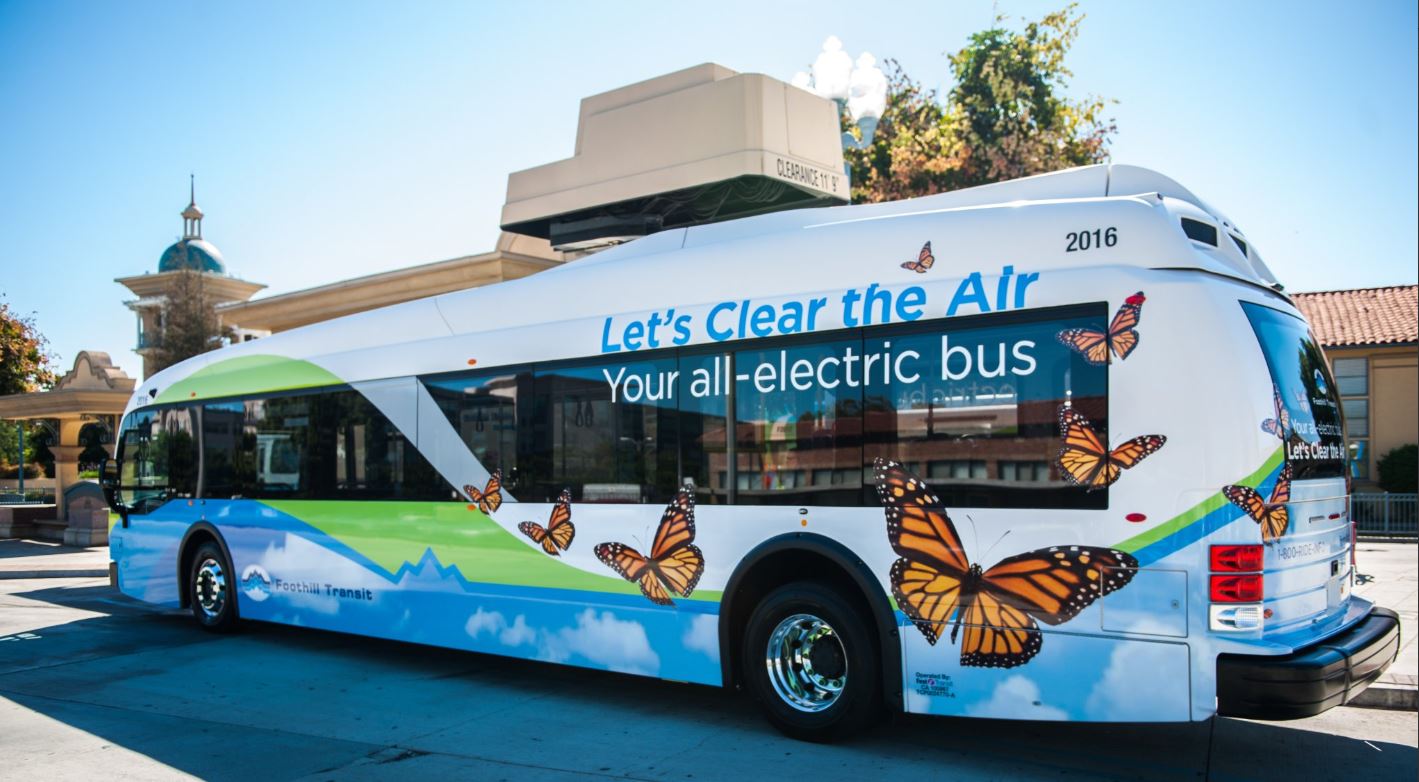December 16, 2018 - SACRAMENTO – The California Air Resources Board last Friday approved a first-of-its-kind regulation in the United States that sets a statewide goal for public transit agencies to gradually transition to 100 percent zero-emission bus fleets by 2040.
“A zero-emission public bus fleet means cleaner air for all of us. It dramatically reduces tailpipe pollution from buses in low-income communities and provides multiple benefits especially for transit-dependent riders,” CARB Chair Mary D. Nichols said. “Putting more zero-emission buses on our roads will also reduce energy consumption and greenhouse gases, and provides cost savings for transit agencies in the long run.”
The Innovative Clean Transit regulation is part of a statewide effort to reduce emissions from the transportation sector, which accounts for 40 percent of climate-changing gas emissions and 80-90 percent of smog-forming pollutants. The transition to zero-emission technologies, where feasible, is essential to meeting California’s air quality and climate goals.
Full implementation of the regulation adopted today is expected to reduce greenhouse gas emissions by 19 million metric tons from 2020 to 2050 – the equivalent of taking 4 million cars off the road. And it will reduce harmful tailpipe emissions (nitrogen oxides and particulate matter) by about 7,000 tons and 40 tons respectively during that same 30-year period.
As longtime partners for clean air in California, the state’s 200 public transit agencies play a pivotal role in transitioning vehicle fleets away from fossil fuel-powered technologies to zero-emission alternatives. Eight of the 10 largest transit agencies in the state are already operating zero-emission buses, including battery electric and hydrogen fuel cell vehicles.
Transit agencies are particularly well suited for introducing these technologies. They operate largely in urban centers, where pollution and noise are of greater concern. Their buses drive in stop-and-go traffic where conventional internal combustion engines waste fuel while idling. And their fleets run out of central depots where charging infrastructure can be installed and conveniently accessed.
Deployment of zero-emission buses is expected to accelerate rapidly in the coming years – from 153 buses today to 1,000 by 2020, based on the number of buses on order or that are otherwise planned for purchase by transit agencies. Altogether, public transit agencies operate about 12,000 buses statewide.
To successfully transition to an all zero-emission bus fleet by 2040, each transit agency will submit a rollout plan under the regulation demonstrating how it plans to purchase clean buses, build out necessary infrastructure and train the required workforce. The rollout plans are due in 2020 for large transit agencies and in 2023 for small agencies.
Agencies will then follow a phased schedule from 2023 until 2029, by which date 100 percent of annual new bus purchases will be zero-emission. To encourage early action, the zero-emission purchase requirement would not start until 2025 if a minimum number of zero-emission bus purchases are made by the end of 2021.
CARB will continue to work with transit agencies on a successful transition and conduct regular reviews of progress.
Benefits of the regulation are many:
- Transit-dependent riders, especially in disadvantaged and low-income communities, will breathe cleaner air and enjoy quieter rides.
- Transit agencies are expected to save $1.5 billion in maintenance, fuel and other costs by 2050 after the full buildout of infrastructure.
- The deployment of zero-emission buses in California will bring new workforce training and employment opportunities including high-quality manufacturing jobs to communities across the state.
Electrifying the heavy-duty transportation sector is supported by a range of government policies and programs. Public funding for zero-emission vehicles and related charging infrastructure is administered by CARB, the California State Transportation Agency, Caltrans, the California Energy Commission, and local agencies.
In addition, utilities are supporting this transition with new electricity rate designs and investments in charging infrastructure. The Department of General Services is also streamlining bus purchases through a single statewide zero-emission bus purchase contract.
Incentive & Grant Information
More Information
CARB's mission is to promote and protect public health, welfare, and ecological resources through effective reduction of air pollutants while recognizing and considering effects on the economy. The CARB oversees all air pollution control efforts in California to attain and maintain health based air quality standards.
Source: CARB









